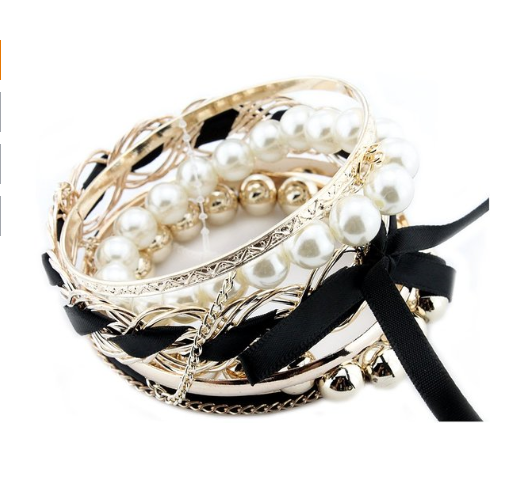BONAMART ® Set Of Korean Romatic Design Multilayer Braided Bow Faux Pearl Bead Bracelet Bangle Fashion Jewelry
Color
Jewelers describe the color of a gemstone in terms of three characteristics: hue, saturation, and tone. A gemstone's basic color is its hue, and those with purer hues (for emeralds, green; for sapphires, blue; and for rubies, red) are generally considered more valuable. Often, however, a hint of another color can be detected. Saturation is a measure of the intensity or purity of a gem's hue and is determined by the degree to which gray or brown hues mute its defining color. Value tends to increase with saturation, so a fully saturated purplish blue sapphire may well be more expensive than a muted pure blue one. The tone of a gemstone, a measurement of its lightness or darkness, is usually given as light, medium-light, medium, medium-dark, or dark.
Clarity
A flawless gemstone is rare and expensive. As with diamonds, most gemstones have inclusions, or tiny mineral flaws, that can be seen under magnification or by the careful eye. Make sure that any inclusions in the stone do not penetrate deeply into the gem, as this may cause it to break or crack. Clarity grades range from VVS (very, very slightly included) to I3, in which inclusions are prominent and severely affect the gemstone's beauty.
Cut
A gemstone's cut refers to its proportions and symmetry. In making a gemstone look appealing--the stone should be symmetrical in all dimensions so that it will appear balanced, and that its facets will reflect light evenly. Color should also be taken into account when cutting for optical efficiency. If a stone's color is highly saturated, a shallow cut will allow it to pass more light, while a deeper cut may increase the vividness of a less saturated gem. There is no generally accepted grading system for gemstone cut.





















